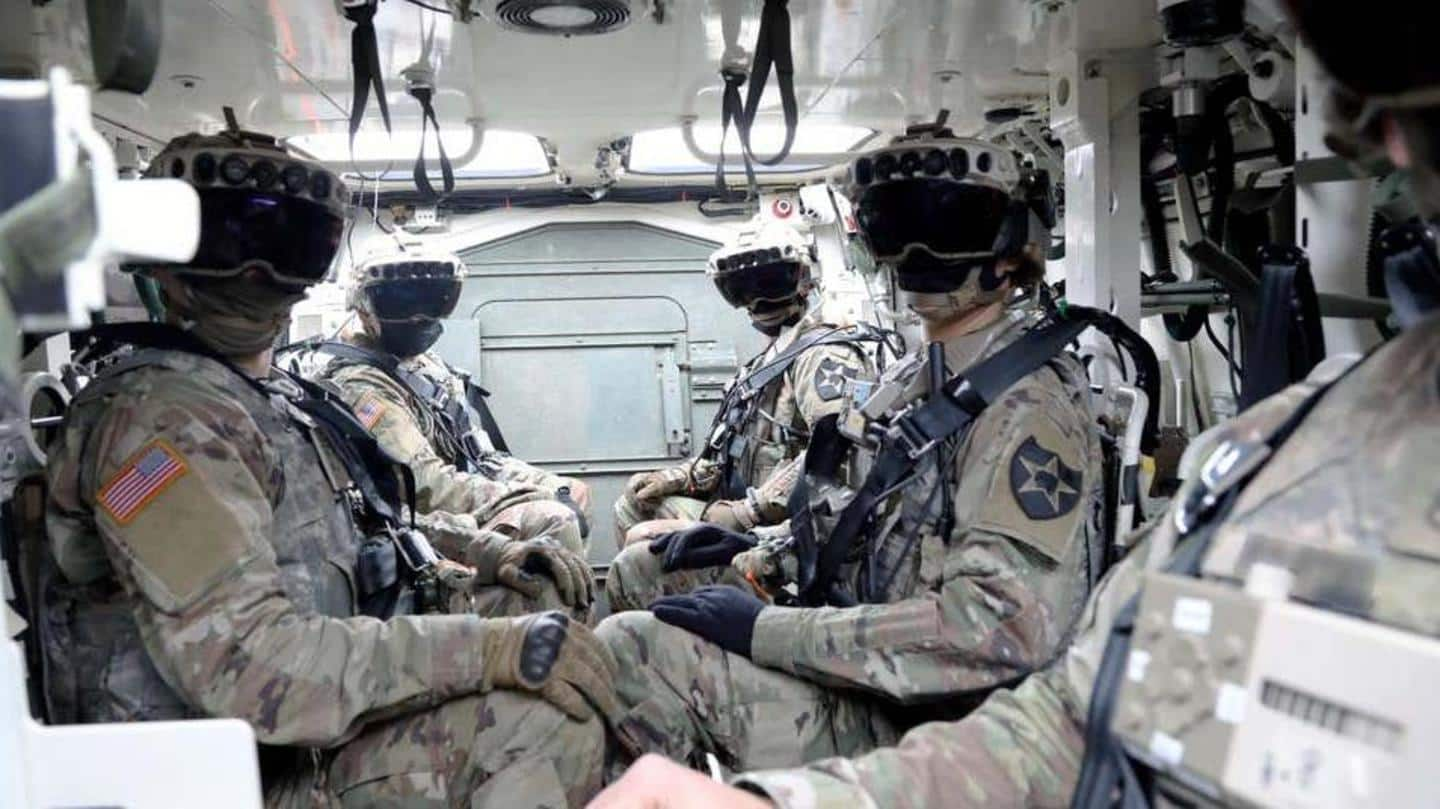
Microsoft's HoloLens mixed reality headset makes US soldiers nauseated
What's the story
US Army soldiers are feeling the need to puke. No, it's not because of a difficult training regimen.
It is the result of Microsoft's HoloLens they have been testing, and nausea is one of the oldest, most pervasive problems associated with mixed reality headsets.
The training was supposed to happen last year. However, the army pushed it for a year to this October.
Context
Why does this story matter?
When the US Army granted Microsoft the contract to build an augmented/mixed reality headset, it created an uproar.
While Microsoft employees protested the company's decision to work on weapons, the soldiers expressed their displeasure at working with such headsets.
It seems that the first tests did not do enough to reduce the concerns. It might take a while before they are combat-ready.
Issues
The headset resulted in 'mission affecting physical impairments'
According to an unclassified Defense Department report titled Controlled Unclassified Information accessed by Bloomberg and Insider, the Integrated Visual Augmentation System (IVAS) is resulting in "mission affecting physical impairments."
Soldiers experience issues such as headaches, nausea, and eyestrain. As per the report, there were too many failures of essential features.
Nickolas Guertin, Defense Department's Operational Test and Evaluation Director, said soldier acceptance is low.
Purpose
Soldiers can see through smoke, project 3D maps with headsets
The Microsoft HoloLens is being tested by soldiers as part of the 'Soldier Touch Point' program. In 2021, the US Army awarded Microsoft a $22 billion contract to make HoloLens augmented/mixed reality headsets.
The devices implement the military's IVAS. The headsets help soldiers see through smoke and around corners.
They can also pull up holographic training images and project 3D terrain maps.
Stats
Soldiers are not satisfied with the device
The report said that over 80% of soldiers who experience any symptoms did so within three hours of use. The headset reportedly failed four out of the Army's six evaluation tests.
At least one tester expressed their fear of being put in a dangerous situation due to the headset.
"The device would have gotten us killed," a tester claimed.